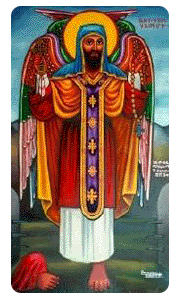The word church has two meanings. One of these means a community of the faithful who are baptized believing in Christ. (Fet. Negest Art. 1;Mt. 18:17;Acts 20:28). As people of God in the times of the Old Testament were called House of Israel; So are God’s people in the New Testament times called Church. This means Christians; the community of Christians. The second meaning denotes the building in which believers congregate to offer worship to God. The Ark of Noah, the Tent of Abraham, the Tabernacle and the Temple of Solomon had been examples of churches where offerings and worship to God were made. During the times of the New Testament, Our Lord and savoir Jesus Christ, who is the Head and foundation of the church established the Church with his own blood. The church as laid down by the church Fathers in “Tslote Hymanot” (Creed) is known as the One, Holy, Universal and Apostolic.
FAITH AND WORK FEAST
THE ORDER OF ALMS GIVING
THE ARK OF THE COVANET
HOLY SCRIPTURES THE CROSS
ORDER OF FASTS TRADITION (TEWFIT)
THE ORDER OF WORSHIP THE VESTMENTS
THE ORDER OF PRAYER
THE ORDER OF PROSTRATION
THE GLORY OF THE HOLY VIRGIN MARY
THE HONOR ACCORDED TO THE SAINTS


